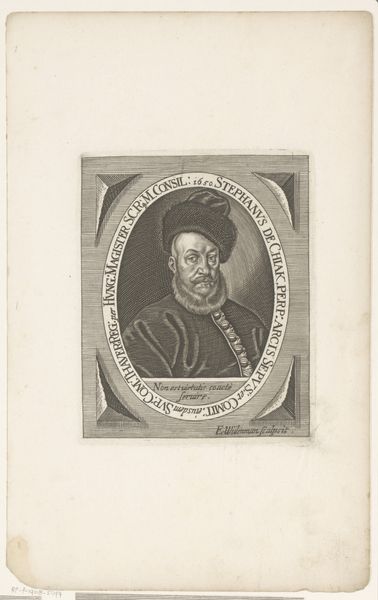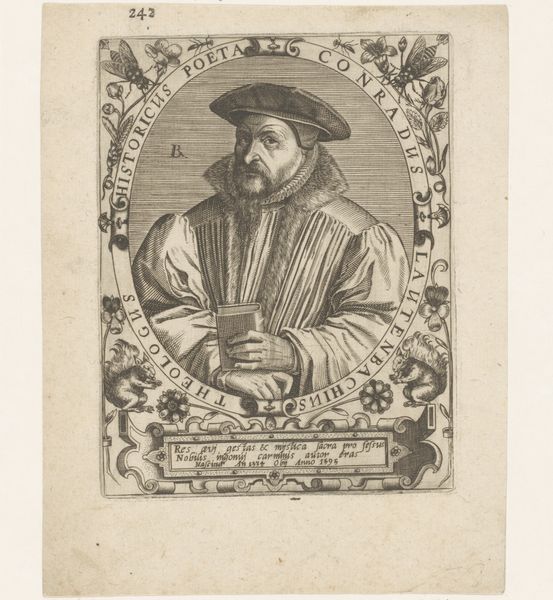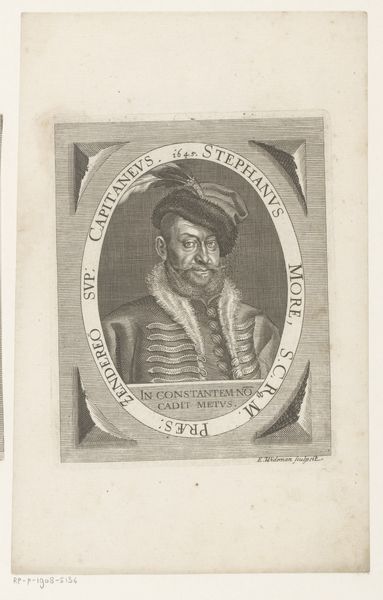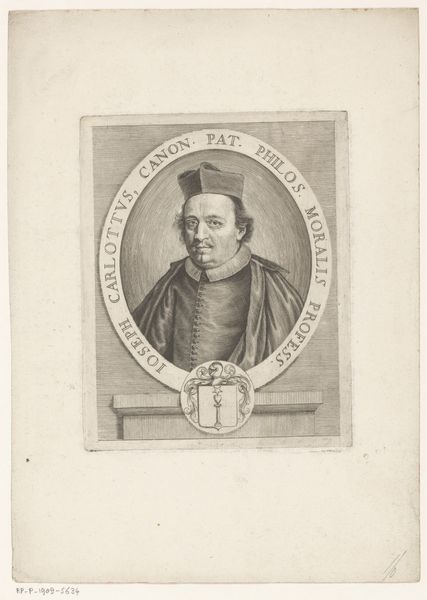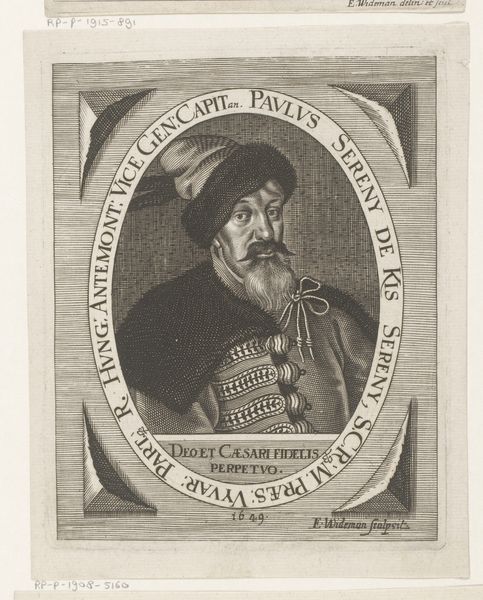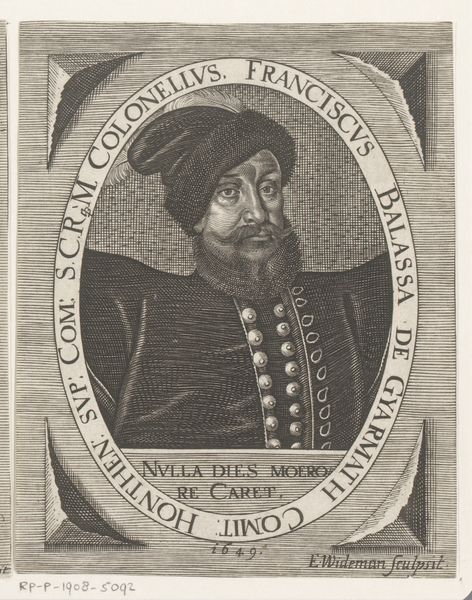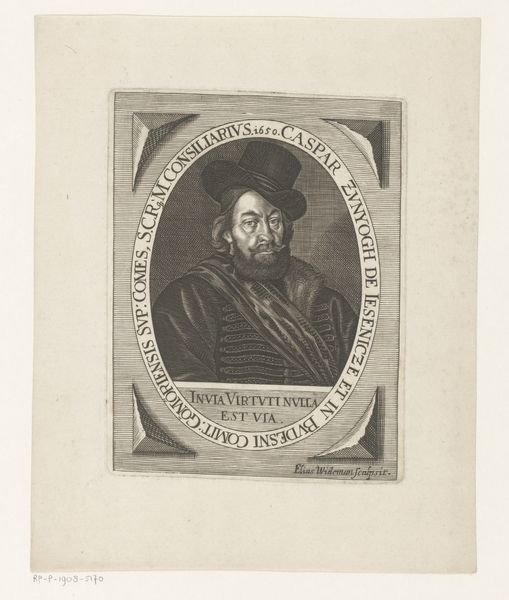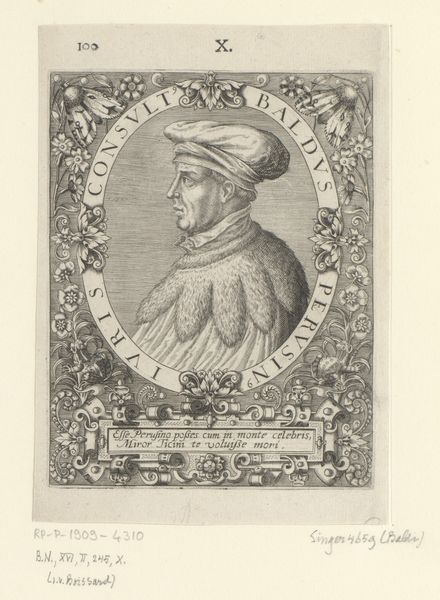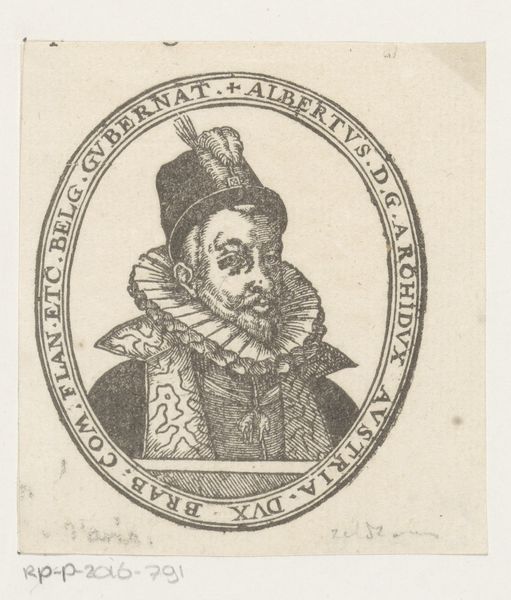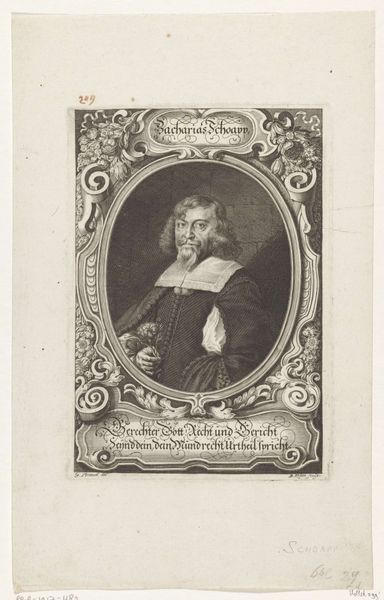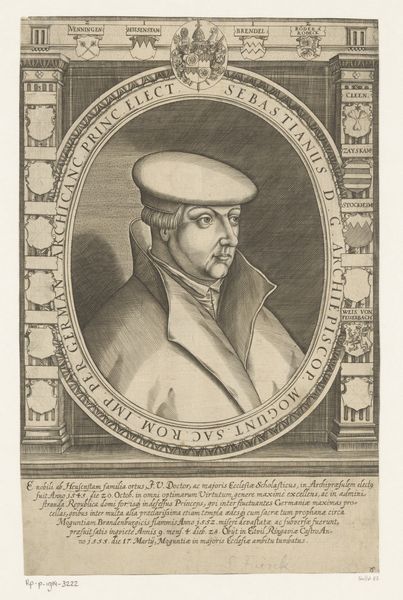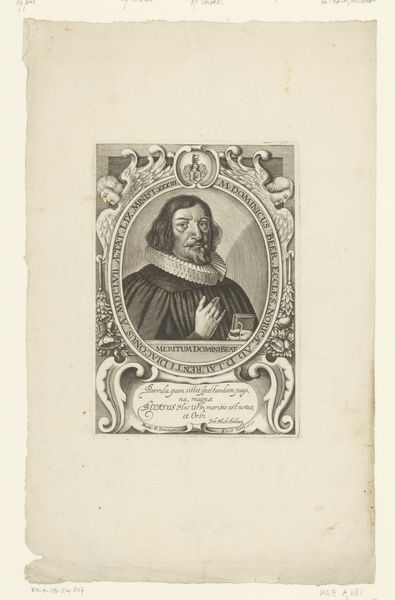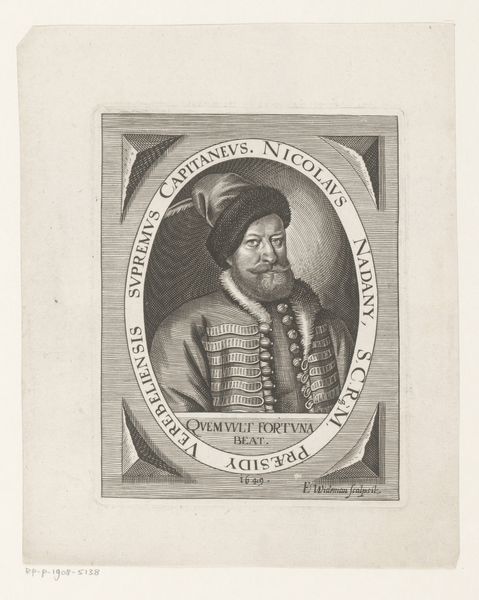
print, engraving
#
aged paper
#
toned paper
#
baroque
# print
#
light coloured
#
engraving
Dimensions: height 145 mm, width 117 mm
Copyright: Rijks Museum: Open Domain
Curator: Looking at this portrait, a certain weightiness immediately strikes me, an almost palpable sense of gravitas conveyed through the careful cross-hatching. Editor: Here we have Elias Widemann's engraving of Gabriel Bossani de Nagi Bossan, produced in 1650. Bossan was, it seems, the vice-captain of Komarno. It's now held in the collection of the Rijksmuseum. Curator: It is an interesting piece! Look at the way the artist utilizes the oval frame to draw focus towards Bossani's features, it certainly feels imposing. The inscription feels more like a decoration than anything meaningful to take from the piece. Editor: Well, engravings such as this one fulfilled crucial functions within 17th-century society. Consider the dissemination of social status and political allegiance, of which portraits were an essential element. What this image conveys of Bossani – or, rather, what he wished to convey to others – is central to its very purpose. Curator: You have a point, of course! I am still struck by the patterns Widemann generates through the lines, so simple yet conveying volumes about light and texture. Even the slight toning of the paper has a warming effect, as if aging the piece to give even more personality. Editor: Precisely. Widemann crafted not just an image but a carefully curated message within the politics of that time, where a man's status depended not only on position but on carefully managed visual presence. Think of him as a key part of the ruling mechanism. Curator: It really seems to illustrate more than just a portrait—rather, it embodies the relationship between artist and sitter. A statement about artistic style in the face of politics and public reception! Editor: Exactly! The portrait serves both a formal, decorative role but carries an essential message to audiences who understood the unspoken context. It shows a face and broadcasts position! I hadn't looked at it like that until now! Curator: And with the artist as an interesting part in portraying this persona! Editor: True—all artists worked, whether they were fully conscious of it or not, within sets of socially enforced rules. This portrait captures something crucial about power structures from that period.
Comments
No comments
Be the first to comment and join the conversation on the ultimate creative platform.
